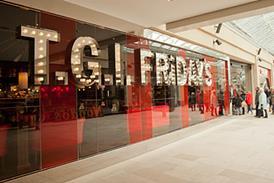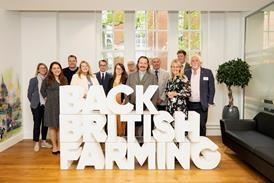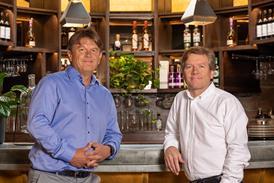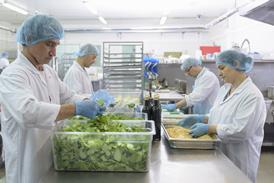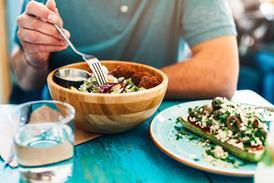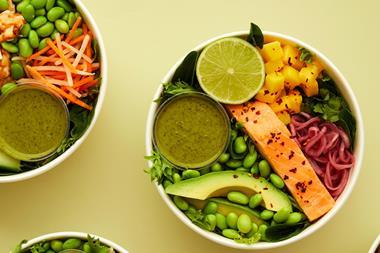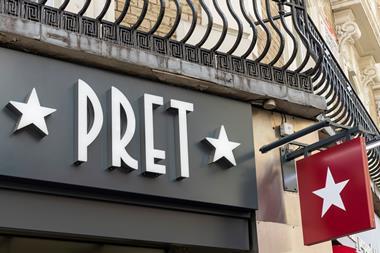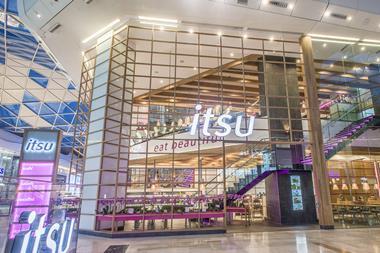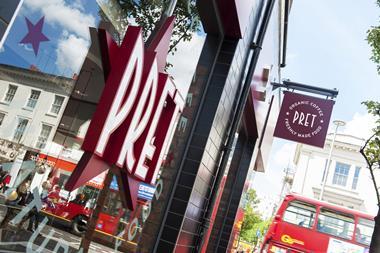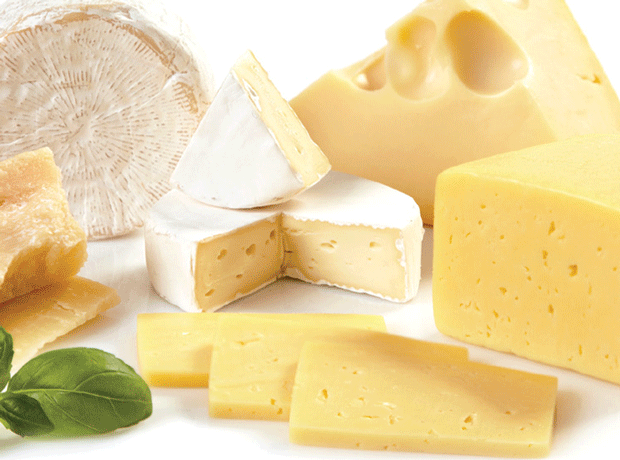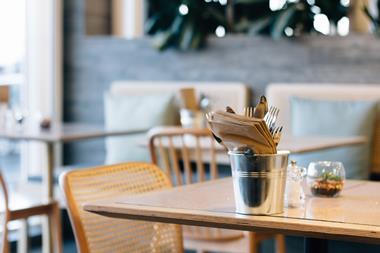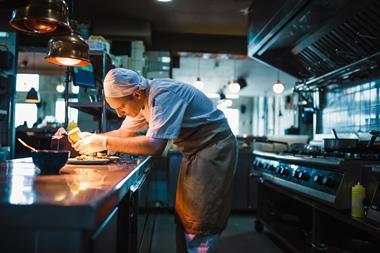Strange things are happening to food, at least on social media. Forget burgers and cakes: courgetti, nut milks and chia are conquering the internet. The ‘clean-eating’ trend has turned the likes of Ella Woodward (Deliciously Ella) and the Hemsley sisters from food bloggers into stars, with best-selling books, merchandise and – for the Hemsleys – a TV show.
The latest brand extension is bricks and mortar. Customers can eat chia pudding at Woodward’s Mae Deli in Marylebone or head to the new Hemsley + Hemsley café at Selfridges. But what does this trend mean for the restaurant industry? Are courgetti and co a fad, or part of a long-term cultural shift towards healthier eating that is changing what people want to eat in restaurants as well as at home?
Clean eating has been growing for a few years. It comes with a new lexicon – raw, plant-based, Buddha bowl – which, if you’re used to the language of classical cooking, may take some getting used to. The trend is being driven by social media, particularly Instagram (Woodward has some 800,000 followers, the Hemsleys have 220,000).
Inevitably, the movement is influencing the restaurant industry, particularly in London. “Diners are taking inspiration from social media and cookbooks, and increasingly want to eat out in line with their healthy lifestyle choices,” says Charles Banks, co-founder of food trends agency The Food People.
The Detox Kitchen, run by chef Lily Simpson, has announced growth plans after securing £2m investment from industry figures, including Jyotin Sethi of JKS Restaurants (Hoppers, Gymkhana). At The Detox Kitchen’s two London delis, all dishes are free from dairy, wheat and refined sugar. London-based salad bar brand Vital Ingredient, meanwhile, has plans to double site numbers to at least 35 over next three years, including exploring opportunities outside the capital. Private equity company LDC has backed the management buyout of the company as part of a £12m funding package that will support the expansion of the healthy food-to-go concept.
Other new and upcoming healthy openings in the capital include Farmstand, a US import selling DIY healthy lunchboxes, and Farmer J, offering Paleo granola and raw energy balls to city workers from this summer.
Not just healthy, but deliciously so
If you’re wondering how all this differs from the independent healthy restaurants that have been around for years, the first answer is the food’s appearance. “The new wave is ‘deliciously healthy’ with clever use of ingredients to create dishes that are multi-layered, using textures, rawness and colour,” says Banks. In other words, it tastes good and looks great on Instagram.
There’s also an emphasis on nutrition rather than dieting. “Diners used to look for low calorie: now it’s dairy free, high protein and low sugar,” says Rosie Parkes, marketing manager at healthy breakfast and lunch chain POD.
Aside from the London independents, it’s the fast-casual sector that has been
quickest to respond. You’ll find nut milks at Pret, ‘SuperClean’ salads at Leon and brown rice bowls at Itsu. “There are a lot more people eating vegan options at the moment, not necessarily sticking to a vegan diet but cutting down on animal products as a way of being healthy,” says Tom Davies, head of food at Leon.
Playing to the strengths of these groups, interest in healthy eating is at its highest at lunchtime: 47% of diners would choose to eat a healthier meal for an everyday lunch, and 44% for a leisurely lunch (Mintel, Sept 2015). The clean-eating movement is unquestionably influencing these restaurant groups. “I’ve always got my eye on wellness bloggers like Deliciously Ella and Madeleine Shaw,” says Parkes.
This month, Pret A Manger opens its first vegetarian-only store in Soho in a bid to trial more meat-free dishes on its menu. The move comes after the company announced that total sales rose to £676m last year, with vegetarian items seeing double-digit growth. Avocado was the most popular ingredient, with customers eating five million last year alone.
“We are not trying to evangelise and I won’t be forgetting that our number one-selling sandwich in the UK is the chicken caesar and bacon baguette,” says Pret CEO Clive Schlee. “Our takings in the shop will probably drop, but the pop-up will signal that Pret is serious about providing veggie and vegan options. And who knows, we might just find the next best-seller in the process.”
Pret’s chefs have replaced more than 40 meat and fish items with new ingredients, with options including dairy-free granola and coconut yoghurt; mushroom and avocado sushi salad; and a vegan red tapenade and avo superbowl with kale, avocado, roasted pepper and cherry tomato tapenade, baby plum tomatoes and mixed seeds. Last month, the group also launched a range of meat-free chef’s specials. “We are doing this both to challenge our chefs to come up with delicious veggie and vegan food, and to ask our customers what they think should end up on Pret’s shelves permanently,” adds Schlee.
Fast-casual customers are also using fitness apps to make healthy-eating choices – checking the nutrition content of Pret, POD or Eat dishes on MyFitnessPal. Paying attention to changing tastes appears to be working. Leon, Pret and itsu are all expanding nationwide, and others will follow. “The spread of Pret and itsu shows there’s definitely capacity for healthy eating to go across the UK, particularly at travel sites and cities like Manchester, Birmingham and Oxford which the industry is investing in,” says Parkes.
Casual dining catches on
The fast-casual chains aren’t the only ones adapting to clean eating. “We’ve started seeing the trend in the casual-dining sector,” says Pooja Sharma-Jones, sales and marketing director at Drake and Morgan. The bar group is introducing dishes with ingredients like buckwheat and kale onto its menu. “You need to give customers the option, then it’s up to them how healthy they go,” says Sharma-Jones. Indeed, 34% of UK diners would choose a venue serving healthy dishes over one that does not, even if they don’t go on to order those dishes (Mintel, Sept 2015).
For other operators, offering a separate ‘clean’ menu alongside their regular one is proving popular. Gaucho is an unlikely destination for clean eaters, but the Argentine steak group’s new ‘Feel Good, Feel Great’ lunch menu has been a big hit, says marketing director Matt Ford. The menu features dishes like poached salmon with citrus quinoa on one side and empanadas and rib eyes on the other. “Some 40% of our lunch customers are going for the ‘Feel Good’ side,” says Ford.
Brighton independent Six has seen similar demand for its plant-based lunch menu, designed with local juice bar 42 Juice. The four dishes are boxed out on a bigger menu that also includes burgers and steaks. “The plant-based menu is 25% of our daytime trade. It’s been so popular that we’re starting it in the evenings, too,” says owner Fabio Lauro. For Six, incorporating clean-eating dishes is a way of keeping interested punters coming back, without alienating a wider customer base. “If the whole restaurant was plant-based, we’d be excluding a lot of people, especially groups. The way the menu is done keeps everyone happy.”
Could an exclusively clean-eating restaurant really work? Some 47% of UK diners don’t want to be reminded about healthiness, says Mintel. Furthermore, only 16% say that healthiness is a consideration when eating out.
“A large part of eating out in a restaurant is being able to indulge in a bit of theatre and escapism. It would be a shame to bring in all sorts of rules to the experience,” says Yotam Ottolenghi. Paleo restaurant Pure Taste learned this lesson the hard way, shutting in July 2015 after just six months. The restaurant was in Notting Hill… if clean can’t make it in W11, can it make it anywhere?
One of the biggest challenges for a healthy restaurant is the evening trade. How do you make up the shortfall on drinks sales and fries when your clientele are eschewing booze and carbs? “I don’t think the concept would be financially viable for a group our size because we have a large drinks trade,” says Drake and Morgan’s Sharma-Jones. For all-day restaurants, likely success lies in the middle ground. Independents and small groups like Ottolenghi and Grain Store offer what Charles Banks terms ‘better-for-you indulgent’. “An emphasis on vegetables is our ethos, but we never want to be preachy. If you want a Martini on arrival, you can,” says Bruno Loubet, chef-patron at Grain Store in King’s Cross.
There’s also the problem of raw ingredients: pricey coconut oil and spirulina don’t offer the same mark-ups as burgers or chips. “Our biggest challenge in being accessible has been around keeping naturally fast food affordable. This is something we’ve addressed with our new spring menu, focusing development on dishes under £5,” says Leon’s Davies.
Social media has spread the clean-eating message far beyond London, but how healthy do Brits really want to go? Itsu says there’s no difference in uptake for its new ‘beauty smoothies’ and protein-rich dishes between its London and regional branches. Gaucho reports similar interest in its Feel Good menu: “This healthy trend is driven in London, and the big Northern cities have followed,” says Ford.
In the long term, the wellness trend could take hold nationwide, says Banks: “A national health epidemic coupled with taking more control of our health as technology allows means interest in healthy eating will only grow.”
“The industry needs to be aware that consumers are listening to messages about clean eating. But that doesn’t mean we’ll change our core message of what we are,” says Ford.
When it comes to clean-eating, for most restaurants the wisest option is to follow Gaucho’s lead and hedge your bets. A mini menu or some ‘clean’ dishes as part of a broader offering is a smart move, but perhaps it’s too soon to launch that all-night courgetti diner.
The above feature appears in the June issue of Restaurant magazine, to subscribe contact customer.service@wrbm.com


